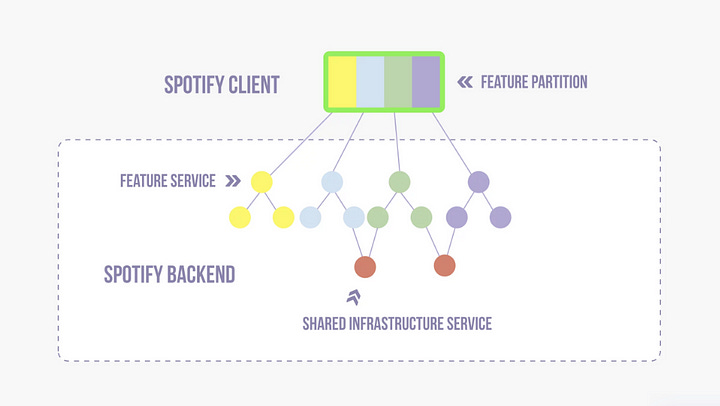How Spotify & Netflix Balance Security & Flexibility
How do you keep innovation flowing without letting the hackers in + FREE access to my video course
Hello there 👋
I’m Rakia, a freelance senior software engineer, Google Developer Expert (GDE), speaker, and content creator.
In today’s roundup, I dive into how to keep innovation flowing without letting the hackers in. I’ll share 9 principles to balance flexibility & security in software architecture. Let’s get right into it!
The Need for Flexibility
Flexibility and security in software architecture often feel like two sides of a tug-of-war.
You want to move fast, adapt to changing needs, and roll out features. But at the same time, you need to protect your data, users, and reputation from cyber threats. It’s like trying to be a sprinter and a bodyguard at the same time — it’s tricky, but not impossible.
Let’s dive into how modern software teams are finding that sweet spot. I’ll bring in some real-world examples to keep things grounded and relatable.
Spotify Model
Spotify thrives on flexibility. Their team structure is built around autonomous squads, each responsible for a specific part of the platform.
“Similar to a scrum team, Squads are cross-functional, autonomous teams (typically 6–12 individuals) that focus on one feature area. Each Squad has a unique mission that guides the work they do, an agile coach for support, and a product owner for guidance. Squads determine which agile methodology/framework will be used.”
This modular approach allows them to quickly roll out new features like personalized playlists or social sharing options. Flexibility is baked into their architecture, enabling them to stay ahead of the competition.
But here’s the catch: with flexibility comes complexity. More moving parts mean more opportunities for something to go wrong, especially when it comes to security.

Netflix Chaos Engineering
Security breaches can undo years of hard work. Think about the high-profile hacks we’ve seen over the years — like the log4j zero-day vulnerability or the XZ backdoor.
These incidents don’t just harm companies financially — they erode user trust.
Netflix uses chaos engineering to test the resilience of its systems. They intentionally introduce failures into their environment to see how systems respond. While this sounds risky, it actually makes their architecture more secure. They identify and fix weaknesses before attackers can exploit them.
Finding the Balance: Principles to Live By
Balancing flexibility and security isn’t about picking one over the other. It’s about designing systems that do both well. Here are some principles that can help.
1. Build Security into Your Workflow
Don’t think of security as a final checklist before launch. It should be part of your process from day one. This approach is often called DevSecOps, where security becomes a shared responsibility across development and operations teams.
2. Use the Right Tools
The right tools can make security easier without slowing you down. Tools like:
automated vulnerability scanners,
cloud access controls,
and encryption APIs
can handle much of the heavy lifting.
3. Least Privilege Access
Give users and services only the access they absolutely need. This principle, known as “least privilege,” minimizes the damage if an account is compromised.
4. Embrace Microservices with Caution
Microservices are great for flexibility. You can update or replace one service without touching the others. However, they also create new security challenges, like managing communication between different parts of your system.
Tip: Use API gateways to control traffic between your microservices. Add authentication, encryption, and rate-limiting to keep things secure.
Example: Twitter uses microservices extensively but implements strict API security to ensure that only authorized services can talk to each other.
5. Secure Your CI/CD Pipeline
A fast deployment process is awesome for flexibility, but it can introduce vulnerabilities if you’re not careful. Attackers could target your pipeline to inject malicious code.
Tip: Use tools like HashiCorp Vault to secure secrets in your pipeline. Add security checks like static code analysis and automated penetration tests.
Example: Adobe secures its CI/CD pipelines with multiple layers of authentication and automated security tests. This approach ensures speed without sacrificing safety.
6. Adopt Zero Trust Architecture
Zero Trust means never assuming anything is secure, even inside your network. Every user, device, and application has to prove it’s trustworthy before gaining access.
Tip: Implement multi-factor authentication (MFA) and use tools like Azure AD or Okta for centralized access management.
Example: Google implemented Zero Trust across its infrastructure through an internal initiative called BeyondCorp. Employees must authenticate every time they access company resources, even if they’re on-site.
7. Use Cloud Managed Services
Cloud computing is a game-changer for flexibility, but it comes with unique security challenges. Thankfully, cloud providers offer built-in tools to help you manage risk.
Managed services like AWS RDS or Google BigQuery take care of a lot of security tasks for you, like patching and encryption. This lets you focus on building features instead of worrying about vulnerabilities.
Example: Slack relies heavily on AWS-managed services to ensure its platform is secure and scalable. This allows their team to stay flexible while maintaining strong defenses.
8. Monitor and Respond in Real-Time
Cloud platforms provide monitoring tools like AWS CloudTrail or Azure Security Center. Use these to detect unusual activity and respond quickly.
Example: Capital One uses AWS monitoring tools to catch potential threats early. After a breach in 2019, they tightened their monitoring systems even further, showing how lessons from failure can lead to stronger security.
9. Balancing Costs Along the Way
Flexibility and security can both come with a price tag. Cloud resources, security tools, and training programs aren’t free. Finding the right balance also means keeping costs in check.
Tip: Regularly review your cloud and security spend. Look for unused resources or redundant tools. Also, invest in training your team — sometimes knowledge is the best cost-saving tool.
Example: Dropbox moved some workloads off the public cloud to its own infrastructure, saving millions while maintaining flexibility and security.
Wrapping Up: It’s All About the Trade-Offs
As technology evolves, balancing flexibility and security will only get more challenging. AI and machine learning could help by offering automated security checks and adaptive systems.
However, attackers will also get smarter. The key to staying ahead is to keep learning, iterating, and improving.
So, how will you balance flexibility and security in your next project?
Whatever approach you take, remember — it’s not about choosing one or the other. It’s about designing a system where both can thrive.
Some of my Recently Published Pieces
📖 "If security isn’t your priority, do any of your other priorities matter?"
🎥 Build a Registration Form with Accessibility & Performance in Mind (Using Tailwind CSS)
📖 Microservices vs. Monoliths: When to Choose One Over the Other?
📖 The Human Side of Software Architecture: How People, Not Just Code, Shape Systems
🎁 Special Gift for You
I’ve got a couple of great offers to help you go even deeper. Discount & free access to my video courses - available for a limited time, so don’t wait too long!
FREE access
🐳 Getting Started with Docker & Kubernetes + Hands-On
Use coupon 46A2DD31FF5CC2235250
Discount
🔥 Modern Software Engineering: Architecture, Cloud & Security
Use coupon B23FA85253A6E0CD0FB0⚡ Master Web Performance: From Novice to Expert
Use coupon 546E3A7DB16476EA624D
Until next time—stay curious and keep building!
Best,
Rakia
💡 🧠 I share content about engineering, technology, and leadership for a community of smart, curious people. For more insights and tech updates, join my newsletter and subscribe to my YouTube channel.




